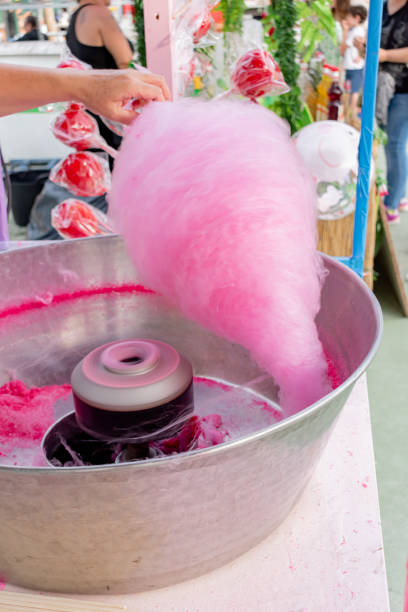8 Tips to Cleanup Mold
1. What is mold and how can it be prevented?
Mold is one of the most harmful microorganisms to your brand. You may be wondering how an apparently harmless strand Fungus could affect your brand’s image.
Mold may seem harmless but it can have serious health effects on certain people. These include children, pregnant women and elderly. Imagine a customer noticing mold on their newly purchased shoes, jackets, caps, or food items. What would you expect them to think of your brand?
If mold is discovered in food products, your brand can be sued and suffer serious damages in terms of revenue or prestige.
Mold prevention is therefore extremely important in order to prevent molds from appearing on your products.
Let’s look at some of the environmental factors which support the growth of mold before we discuss prevention strategies.
Molds come in many different types, and they can grow in any environment. Black molds are among the most common. Alternaria and Aspergillus, to name just a couple, are also very common.
Mold can generally grow quickly in places where conditions are favorable.
Here are some ideal characteristics for an environment that supports mold growth:
-
-
- Damp and Humid Areas.
-
Mold thrives in humid and damp environments. Mold can thrive in a damp environment created by water dripping nearby or a leaking pipe.
Mold can also grow on garments that absorb water or that are stored in humid warehouses.
-
-
- Moderate Temperature
-
Mold can only grow in a mild environment. The mild temperature in warehouses, factories and retail stores makes them ideal for mold growth.
-
-
- Areas with organic matter:
-
Mold is not able to produce its own food, and therefore relies on organic material in the environment. Molds are able to produce enzymes which act on organic substances, making them palatable. You can see molds on leather products, jackets and other organic products.
Keep mold from having a devastating effect on your brand. Here are 8 tips to help you control Mold and maintain a positive brand image in your business.
2. Control Humidity
Mold grows in conditions where relative humidity is greater than 65%. The humidity in your storage/production facility is therefore the first thing that you should control. If you keep the relative moisture of the facility at or below 65%, the rate of growth for mold spores is reduced.
To avoid mold, it is important to keep the relative humidity in your facility at or below 65%.
Keep the relative humidity in the facility at or below 65%, depending on the product. Mold inspections are necessary to determine vulnerable areas for mold growth.
After determining the weak spots, steps are taken to make sure that the humidity doesn’t exceed the set value. The steps include everything from the proper ventilation of the building to the placement of Silica Gel or Cargo Dry Packs to protect products from mold growth. These tips include the following.
3. Proper ventilation of the facility
To avoid mold, it is important to ensure that your facility has proper ventilation. This includes measures that can be taken from the initial design of the building to the additions made after construction.
The factory audit checklist includes mold inspections. It also includes a survey and identifies the ventilation design flaws. The audit will be completed and you will receive a comprehensive report that identifies the deficiencies in the facility’s design. This allows you to take the necessary steps to prevent mold growth.
Possible design suggestions include:
-
-
- Upgrade the HVAC system for areas prone to mold growth
- Re-routing of ventilation systems or adding additional ventilation in areas which are not currently properly ventilated
- Optimising the temperature and the efficiency of your ventilation systems to maintain the desired temperature/humidity.
- Create a dry space
-
Implementing these measures will allow you to control ventilation in your facility better and prevent mold growth.
4. Avoid placing cartons or products in direct contact with the floor or walls
Keep your cartons and products away from walls and floors. Mold usually grows on walls or floors that are moist and have a temperature conducive to mold growth.
You should therefore use racks/bins made of high-quality plastic to support your cartons/products. You can also store cartons/products away from walls and floors by using stands that can support the weight of the products.
This method is very effective in preventing mold from damaging your product.
5. Water, food, oil, and other liquid substances should be kept outside the production workshop
As you may know, mold requires an external source for nutrition in order to survive. This source is usually found within your facility. Mold growth is often caused by organic materials such as food waste, leather, oils, fuels and similar substances.
You must implement mold quality control to overcome this problem.
The following measures are included:
-
-
- Keep organic substances away from other products and in a controlled environment.
- It is important to take special precautions during production in order to prevent spillage of liquids or food products.
- It is important to clean up the workplace from food left behind by employees.
- To prevent mold growth, a strict housekeeping procedure should be followed.
-
Here are a few tips to help you keep mold from growing in your facility. Please contact Tetra Inspection to discuss all the measures you can take.
6. Use Silica Gel
Silica gel is another great way to control humidity around your products. According to a general rule, 1 gram Silica Gel will be needed for each container of 1 liter. This table gives you an idea of how much Silica Gel is needed for different container sizes.
Note:These values are estimates only. Please contact Tetra Inspection to calculate the exact values for your environment.
Silica gel can be used to control humidity in your storage area.
Silica Gel can be used to prevent mold growth on your products or packaging by reducing humidity.
7. Do not pack straight into polybag after steam ironing. Let the clothes dry.
Mold growth is a major problem in garment factories. This is due to the moisture left in the garments after steam pressing. To avoid mold growing on your garments, let the cloth dry naturally before packing it in the polybag.
Mold can grow in polybags because they are impermeable.
Tetra Inspection will help you by creating stringent procedures to ensure that the right time is allowed between the steam pressing and the packaging of the clothing in order to prevent the growth of mold.
8. Use Cargo Dry inside the container
Cargo Dry can protect your products against Mold growth during transport. Desiccate suggests that you might need 1.5kg of Cargo Dry to fill a 20ft shipping container. The amount then doubles to 3kg per container for a container measuring 40ft.
The amount of Cargo Dry needed also depends on the product that is being shipped. Please contact Tetra Inspection for the exact amount of Cargo Dry needed.
9. Use Radiation Companies to Kill All Mold
If you notice mold growth in your facility, it is important that you take the necessary steps. The goal is to eliminate the mold as soon as possible and prevent it from spreading.
We determine which areas are most affected by mold growth as part of our Tetra Inspection mold inspection and garments inspection services. We will also recommend the best method to eliminate it.
Radiation is one of the most efficient and effective methods to eliminate mold. Radiation, and especially UV radiation, is used by specialized companies to destroy the mold spores on your products.
The conclusion of the article is:
Mold can be a serious problem for your product, and therefore your brand’s image.
Mold can also affect your storage or production facilities. Mold can also affect the product you ship to customers.
You must therefore be prepared to protect your product from mold growth. It will also ensure that your products are delivered to clients mold-free.
Kleen condition offers turn-key Mold quality control solutions to your business. It is important to ensure that the product remains free of Mold throughout the entire supply chain, from the moment the raw material leaves your supplier until the final product reaches you.
Our solutions are based upon thorough mold inspections, which focus on:
-
- Production/Storage facility
- Packing and cargo loading
- Business Procedures and Processes
- You can control mold growth by looking at other aspects of your supply chain.






